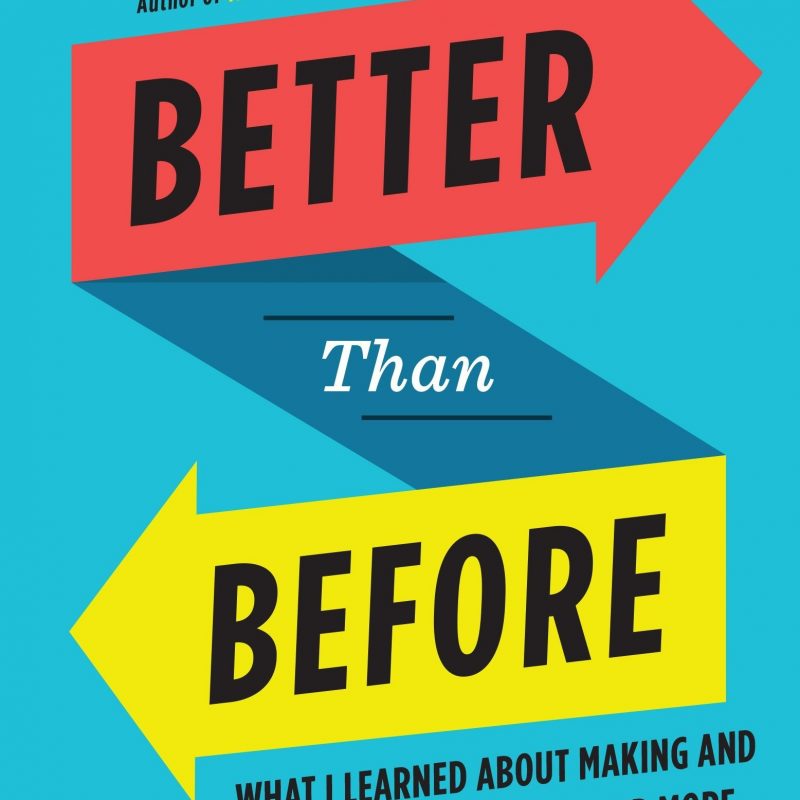CLICK THIS TO STOP TRYING TO ACHIEVE YOUR GOALS BY YOURSELF AND BE COACHED TODAY HERE
CLICK THIS TO DOWNLOAD THIS FREE PDF SUMMARY HERE
CLICK THESE FOR THE FOLLOWING Book | Summaries | Course
YouTube |Spotify | Instagram | Facebook | Newsletter | Website
Prankish entrepreneur Sir John Hargrave believes the mind revolution is underway. Once befuddled by drugs and alcohol, Hargrave drew on his coding background to hack his addiction and transform his life. He shares his system in hopes of sparking an open-source revolution in objective mind training. He offers methods you can use to identify negative mental loops, generate fresh “positive loops” and embed them in your mind through repetition by collaborating and recording your results. Hargrave provides numerous “mind games” that will help you establish healthy patterns of concentration and “meta-thinking.”
Mind Hacking – How to Change Your Mind for Good in 21 Days
This humorous, candid, practical guide calls on your inner nerd to grasp the 21-day challenge of personal mind transformation with playfulness and a sense of wide-eyed wonder. Freethinkers, innovators and those struggling with obsessive thinking will find intriguing solutions.
Take-Aways
Just as honorable, exploratory hacking of computers led to the digital world, “mind hacking” revolutionizes and systematizes the world of thought.
Change your thinking by analyzing, imagining and reprogramming your mind.
Use self-analysis to access an objective meta overview of your mind and to break free from constantly running, but inaccurate, “mind movies.”
Your mind runs in compelling – but retrainable – “mental loops” based on your “Emotion-Thought-Action” patterns.
Inserting new “positive loops” into your mind helps you change your external reality to match your internal reality.
To reprogram your mind, you need a “blueprint.” Write down your positive loops with regular reminders.
Imagination games clarify your desire to “feel, do, have, give and be.”
Small, doable, replicable subgoals create momentum toward big breakthroughs.
Summary
Just as honorable, exploratory hacking of computers gave birth to the digital world, “mind hacking” revolutionizes and systematizes the world of thought.
Playing a prank, author John Hargrave tried to get a credit card in Barack Obama’s name. One consequence was a visit from the US Secret Service the day after Obama became the official 2008 presidential nominee. And another result was that Hargrave’s wife threatened to leave him if he didn’t get sober. Abandoning drink and drugs was the “mind hack” that led him to change his mental habits. He leveraged his lifelong love of programming t0 develop a routine for resetting his mind, poring over research to create active, measurable formulas and games he could use to address his faulty thinking. He shares the formula that worked for him to help you unlock your mind’s amazing potential to enrich your life.
While working at Hewlett Packard in the mid-1970s, Steve Wozniak and Steve Jobs came up with a new idea: Sell a prebuilt computer. Their Apple I machine give birth to the digital society. At the time, the term “hacking” implied honorable technological exploration. The new 21st-century frontier of the mind now summons “mind hackers” to revolutionize the world of thought. Mind hacking is freely available for you to use in a spirit of experimentation as an attempt to master your mental processes.
CLICK THIS TO STOP TRYING TO ACHIEVE YOUR GOALS BY YOURSELF AND BE COACHED TODAY HERE
CLICK THIS TO DOWNLOAD THIS FREE PDF SUMMARY HERE
CLICK THESE FOR THE FOLLOWING Book | Summaries | Course
YouTube |Spotify | Instagram | Facebook | Newsletter | Website
Change your thinking by analyzing, imagining and reprogramming your mind.
Like open-source software, the nascent science of mind hacking belongs to everyone. Mind hacking requires you to become the subject of your mental experiment. The reward is the satisfaction of understanding your mind.
“To master your mind is to master your life. There is no more worthwhile pursuit.”
The process of gaining mastery requires analyzing how your mind works, being willing to imagine new potential and reprogramming your thinking to reach that potential. Writing down your results as you routinely go through a set of mind exercise or games helps you measure your progress and activate the changes you want to institute during an initial 21-day burst of activity.
Use self-analysis to access an objective meta overview of your mind and to break free from constantly running, but inaccurate, “mind movies.”
Your senses constantly collect data, and your brain processes what you learn. Your mind grabs your full attention like an immersive movie, making you forget your position as its observer, but you want to try to achieve a separate objective overview of your mind. To gain mastery, you need “superuser” access with full programming privileges to your mind’s root system – that is, conscious control, not just “user” access. The mind game, “What Was My Mind Just Thinking?” involves stopping and thinking about your last thought, stepping back from your usual fast-moving, internal “mind movie.”
“Could I reprogram my mind? Could I hack into the source code and change the way my mind worked?…I began to look for ‘mind hacks’ – techniques to identify and reprogram my problem thinking.”
“Meta thinking” refers to thinking about thinking; it’s also known as metacognition. Like a chess grandmaster, you can learn to take a higher level meta-view of your mind to work on it, not merely in it. The idea is to seek conscious awareness of your mind. Too often, your mind bounds around like an uncontrollable dog, chasing fleeting thoughts like a puppy chases squirrels. If you try to still your mind, you’ll quickly notice its tendency to misbehave – as if it relishes turmoil. Imagine a parallel world where attention, not money, is currency. You live in that “attention economy.” You pay “attention taxes” all the time – watching TV, fiddling with your smartphone or viewing ads.
Most people believe in multitasking, so they try to do different things at the same time – usually on their screens – and they don’t pay attention to other people who may be present. Yet multitasking is inefficient. This and other undisciplined habits – such as constantly checking social media or messages – drain your attention. Conditioned to disruption, the weakened mind struggles to find “the zone.”
Learning to concentrate represents a kind of Star Wars Jedi training. With “voluntary” attention, you can direct your focus. When you pay “reflexive” attention, things catch your attention unwilled. To gain concentration, calmness and a competitive edge, “reclaim” and then “retrain” your attention. Focus it deliberately. Limit unnecessary distractions like instant messaging and app alerts. Regularly invest an hour in cancelling and clearing out these distractions. Don’t respond instantly to every notice you receive.
Retraining your mind begins with “concentration training,” which some view as meditation. Sit quietly on the floor with your legs crossed and eyes closed. Relax and pay attention to the breath at your nostrils for 20 minutes. You get a point for each time you direct your mind away from its movie. Note your score. Fit this training into your life by getting up a little earlier. Give yourself visual cues to meditate. Reward yourself appropriately. Find a consistent time, place, cue and reward for meditating. Choose a different variation that helps you focus, such as shooting at stray thoughts as if they were game aliens. Simply pause to observe your thoughts as they flow. Stray thoughts will arise. Notice them, set them gently aside and breathe.
Your mind runs in compelling – but retrainable – “mental loops” based on your “Emotion-Thought-Action” patterns.
In computers, various loops – “mental loops, counting loops, conditional loops” and “infinite loops” – perform functions as diverse as playing pranks and improving coding efficiency. Minds also run on loops. Through repetition, a human baby goes from being helpless to being a complex, walking, talking entity in only three years. Powerful repetitive loops during a child’s upbringing affect his or her self-image lifelong. The content of the loops can become self-fulfilling. Negative effects like addictions arise from faulty mental loops.
“There are mathematical simulations, financial simulations and weather simulations. But most important, there are mental simulations.”
Like a coder fixing bugs in a beta software release, you can “debug” your frustrating mental loops. Use the “Five Whys” technique to reveal the roots of a bad loop by asking “why,” over and over up to five times, drilling down if necessary to get a real answer. Every time you think you’ve found an answer, ask why again. Use “Third-Person Perspective” to imagine what you would say to someone else who faced your current problems. The acrostic “METAL” – “My Emotion Thought Action Loop” – reminds you that your fears, thoughts, and problems arise in the looping Emotion-Thought-Action sequence. To debug these loops, identify them and write them down.
Inserting new “positive loops” into your mind helps you change your external reality to match your internal reality.
Discover the reality of imagination. By inserting a fresh “positive loop” – a clear picture of what you want – at the end of habitual Emotion-Thought-Action sequences, you can reprogram your mental matrix and your reality.
“Your loops create your thoughts. Your thoughts create your actions. Your actions create your life. Therefore, the quality of our loops determines the quality of our lives. Fix your loops; fix your life.”
Psychologist Laura King found that people who – every day – write down the vision of their best possible future self become happier, more upbeat and healthier. Close your eyes and imagine that self for five minutes. Imagining your ideas clearly – as Amazon founder Jeff Bezos did with his unprecedented 1-Click Ordering concept – makes them realizable.
To reprogram your mind, you need a “blueprint.” Write down your positive loops with regular reminders.
CLICK THIS TO STOP TRYING TO ACHIEVE YOUR GOALS BY YOURSELF AND BE COACHED TODAY HERE
CLICK THIS TO DOWNLOAD THIS FREE PDF SUMMARY HERE
CLICK THESE FOR THE FOLLOWING Book | Summaries | Course
YouTube |Spotify | Instagram | Facebook | Newsletter | Website
Develop “positive thought loops” to overwrite negative ones. Positive reinforcement works, but yelling “No!” at your mind won’t shift it or calm it. Flesh out your loops with depth, detail, and possibility. Find things you appreciate, because gratitude transforms thinking. Take empathetic care in selecting your mental loops. Put a self-confident “I” pronoun in your loops; ask yourself what you want in a positive way so you add value to the world.
“Finding the you behind ‘you’ is the ultimate mystery. ‘Star Trek’ was wrong: space is not the final frontier. This is the final frontier, this exploration beyond the mind.”
Keep a methodical written overview “of” your mind to avoid getting stuck working “in” it. “Short, simple, flexible” plans are best; record them “Write Now” by listing your activities. The act of writing everything down gives you an overview of your progress and reshapes bad cognitive habits. Create a written “blueprint” of five main goals as a reminder, an opportunity to reflect and a basis for improvement. Harness the power of repetition by practicing concentration and writing positive loops. Repetition establishes new grooves in your thinking.
Imagination games clarify your desire to “feel, do, have, give and be.”
Use “imagination games” to train yourself to avoid positive or negative “magical thinking.” Choose a mood – like calm or empowered – that you’d like to feel. Imagine one thing you’d do if you inherited $50 million. What world-changing contribution would you make? These games include:
“Five Words”: What five adjectives would you want someone at your funeral to use to describe you? Use these words down to express your desired sequence of feel, do, have, give and be. Write down the positive loops that correspond to the five words you chose.
“$10 Million Check”: This is based on the true story that comedy star Jim Carrey wrote himself a personal check for $10 million when he was a broke aspiring actor. This is a way to flip negative thoughts to positive. Write and then read an aspirational reminder every day.
“Smiling in the Shower”: Use your mental downtime to bring positive loops to mind. Forcing a smile makes you feel happier.
“Reminding Your Mind”: Create and set up a system to remind you to be positive.
“Shall We Play a Game?”: Think through the steps required to reach your goal, not just the result.
“Block and Tackle”: Mentally simulate the difficulties of each step you need to take toward your objective.
“Self-Simulation”: Take a third-person view of yourself, as if watching yourself give a speech. This can propel you to take real-world actions.
“Share the Dream”: Tell a trusted person about one of your positive loops.
To make your goals real, work with others. Nupedia, an early version of Wikipedia, failed because it lacked the mass collaboration central to Wikipedia’s success.
“When you think of [your] five goals…what is the thought loop that will get you there? Choose your thought loops carefully, for they will determine the future direction of your life.”
As recovering alcoholics well know, assisting others helps you, too. As you teach, you build knowledge, personal accountability, and self-understanding. This reciprocity feeds positive change.
Small, doable, replicable subgoals create momentum toward big breakthroughs.
To avoid being overwhelmed, plan your small actions that add up to reaching your goal. Use the mind-focusing acronym “LASER” – “Limited, Achievable, Specific, Evaluated, Repeatable” – to guide your micro-actions. See them as part of a “video game” in which you attain higher levels as you progress. Within LASER, do routine daily mind games, focusing on a relevant subgoal. Mirroring the dynamics of pushing a child’s swing, well-timed nudges from your micro-actions will create a repeating resonance that increases your upswing toward a big goal and sets up favorable habits.
These “powerful techniques…can help you accomplish anything you can imagine, whether that’s losing weight, changing habits, starting a business, finding love or building wealth.”
This challenges your intuition and opens a “final frontier” for exploration. Follow the mind-hacking system with dedication and a sense of fun. On your “Practice Sheet,” set up a 21-day schedule of mind games, recording the results, reprogramming your thinking and rewarding your progress:
Day 1: “Accepting the quest”: Set a daily time to work on hacking your mind.
Day 2: “What was my mind just thinking?”: Track how often you “check-in” with yourself daily.
Day 3: “Squirrel”: Be aware of what tugs at your attention or breaks your flow. Are you as distractible as a squirrel?
Day 4: “The one-hour investment”: Take an hour to turn off unneeded digital alerts. Count how many distractions you ditched.
Days 5 and 6: “Concentration”: Begin meditating 20 minutes daily. Record your progress. Follow the meditation routine until it’s embedded.
Days 7 through 10: Add “Name That Loop”: to the concentration exercises – Use the Five Whys to examine any negative mind loops, worst-case scenarios or third-person perspectives. Do a mind game daily that helps you activate your Feel, Do, Have, Give and Be cycle. Keep practicing and rewarding yourself.
Days 11 through 14: Continue the “Concentration Game”: Add your Write Now exercises to the mix.
Day 15: “Reminding Your Mind”: Continue to concentrate and write down your progress. Carry out additional mind games that remind you of your positive loops.
Days 16 through 18: “The Simulator”: While still doing concentration and writing exercises, add one-minute mental simulations of positive loops. Reward yourself consistently
Day 19: “Share the Dream”: Do all the previous days’ activities and tell a friend about a positive loop. “Sharing your goals…makes you more likely to achieve them.”
Days 20 and 21: The LASER – Write a single subgoal: Use the LASER to develop a small step toward it, and take that step. On day 21, check it off as done, or set a simpler or different subgoal – and do it, too.
CLICK THIS TO STOP TRYING TO ACHIEVE YOUR GOALS BY YOURSELF AND BE COACHED TODAY HERE
CLICK THIS TO DOWNLOAD THIS FREE PDF SUMMARY HERE
CLICK THESE FOR THE FOLLOWING Book | Summaries | Course
YouTube |Spotify | Instagram | Facebook | Newsletter | Website













